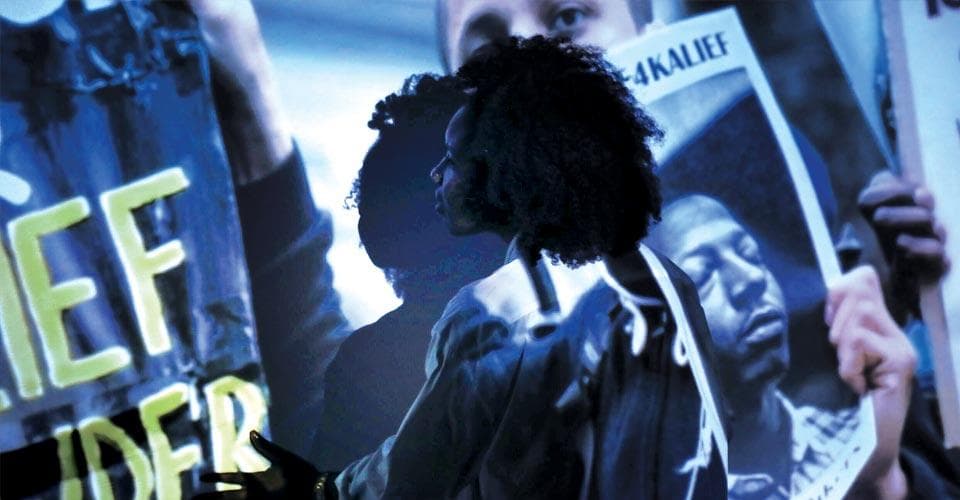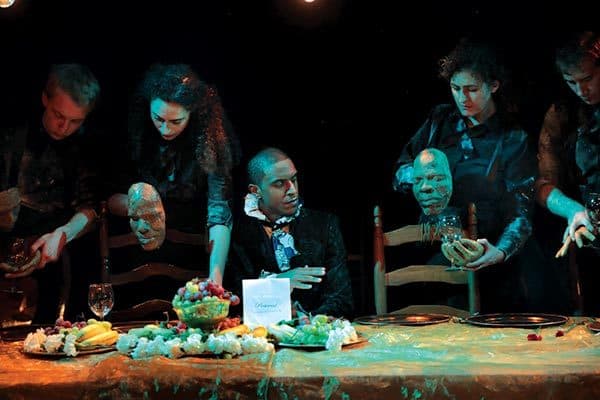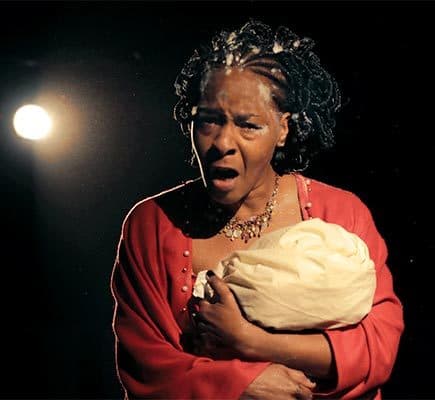‘Food’ for Thought

The multimedia piece “Food for the Gods” takes on the emotions surrounding the deaths of Black men in America. A video projection shows photos and newspaper clippings of slain Black men.
Performance Piece Asks Tough Questions Via Unexpected Messenger: Puppets
By Sala Levin ’10
Photos by Theo Coté
In 2011, Nehprii Amenii was working toward a graduate degree in theater production at Sarah Lawrence College and resolutely avoiding the distressing news of the pending execution of Troy Davis, a Black man convicted of murder in Georgia who’d garnered the support of Amnesty International, the NAACP, Pope Benedict XVI and former President Jimmy Carter.
But one afternoon, running to catch the subway in the heart of Harlem, she happened upon a protest on Davis’ behalf. “I had to go through the process of making myself un-ignorant to what was really going on” in Georgia, she says.

Emmett Till and Amadou Diallo, represented by puppets, are among those who attend a celestial dinner party.
That process led to “Food for the Gods,” a 2012 multimedia performance piece that incorporates puppetry and sends the audience on a journey from a funeral reception to an ethereal bamboo forest to a dinner party in the afterlife attended by Emmett Till, Amadou Diallo and others. “Food for the Gods” will be presented at The Clarice Smith Performing Arts Center next winter as part of its expanded Artists in Residence program; Amenii has already begun working with UMD faculty and staff to bring the project to life.
“Unfortunately, the subject matter is relevant all the time,” says Jane Hirshberg, artistic planning program director at The Clarice. The ambitious, sculptural set design and imaginative characters like Madam Coal Belly—crafted from an antique stove and kitchen utensils—made the piece a natural fit for the program, which now offers artists two-year terms to research and produce their work.

An angry mother tries to teach her child how to survive in a white-dominated world.
At the beginning of “Food for the Gods,” each audience member receives a program in the form of a funeral notice, listing each real-life Black man who will appear as a silent puppet at the dinner party. Other characters include a maternal figure, whose rage is one of the central themes of the show, and a girl meant to be a stand-in for the playwright herself and her initial instinct toward indifference as a means of self-preservation.
But it’s another character who’s central to Amenii: the real audience. The hope is for viewers to “stay actively engaged, rather than to passively disengage,” she says. “People do not care as much about issues as they do about people once (they) become real and relatable. I do believe that this is where the power of art and storytelling can play a key role in human connectivity.”
0 Comments
Leave a Reply
* indicates a required field
